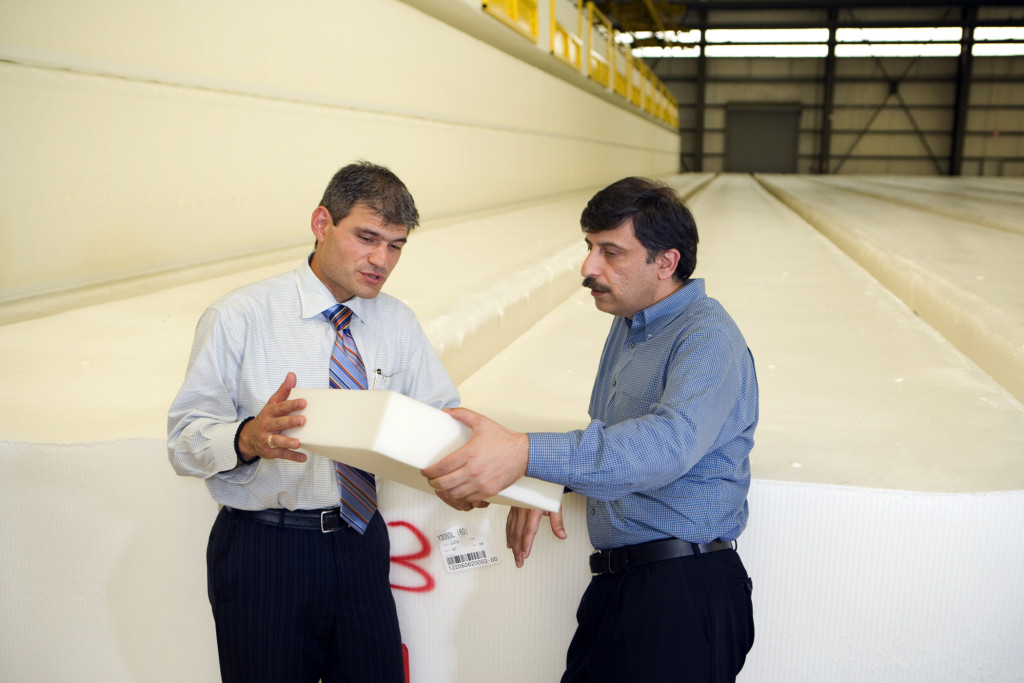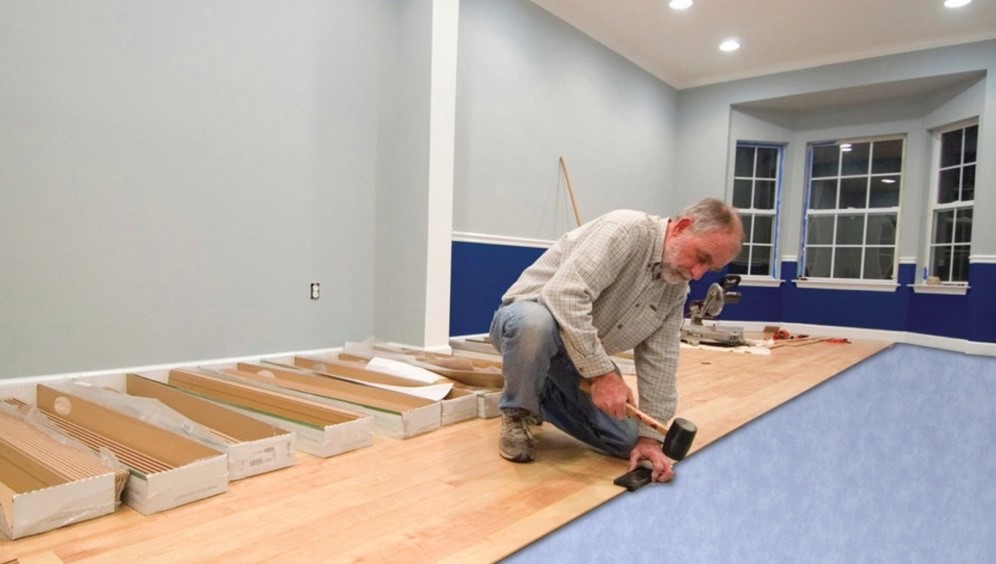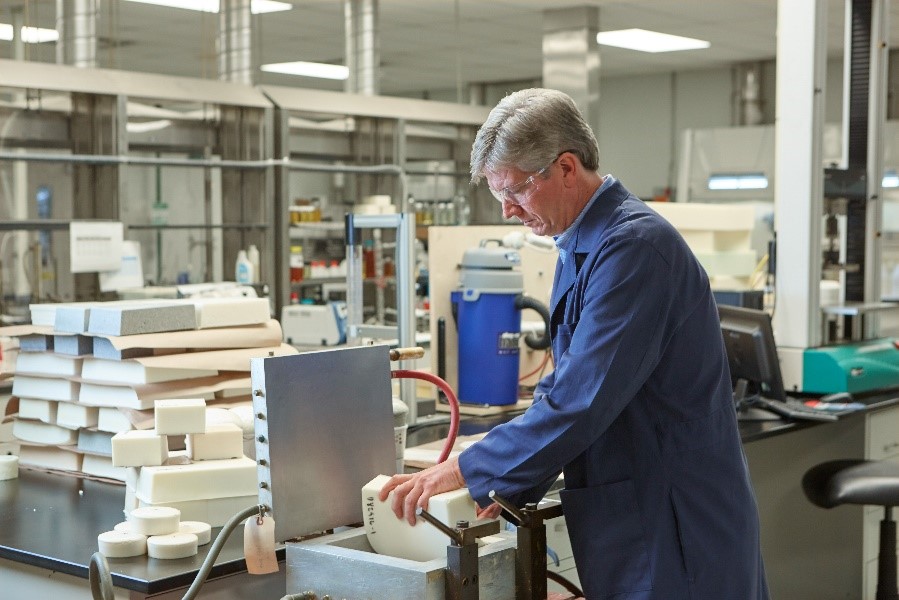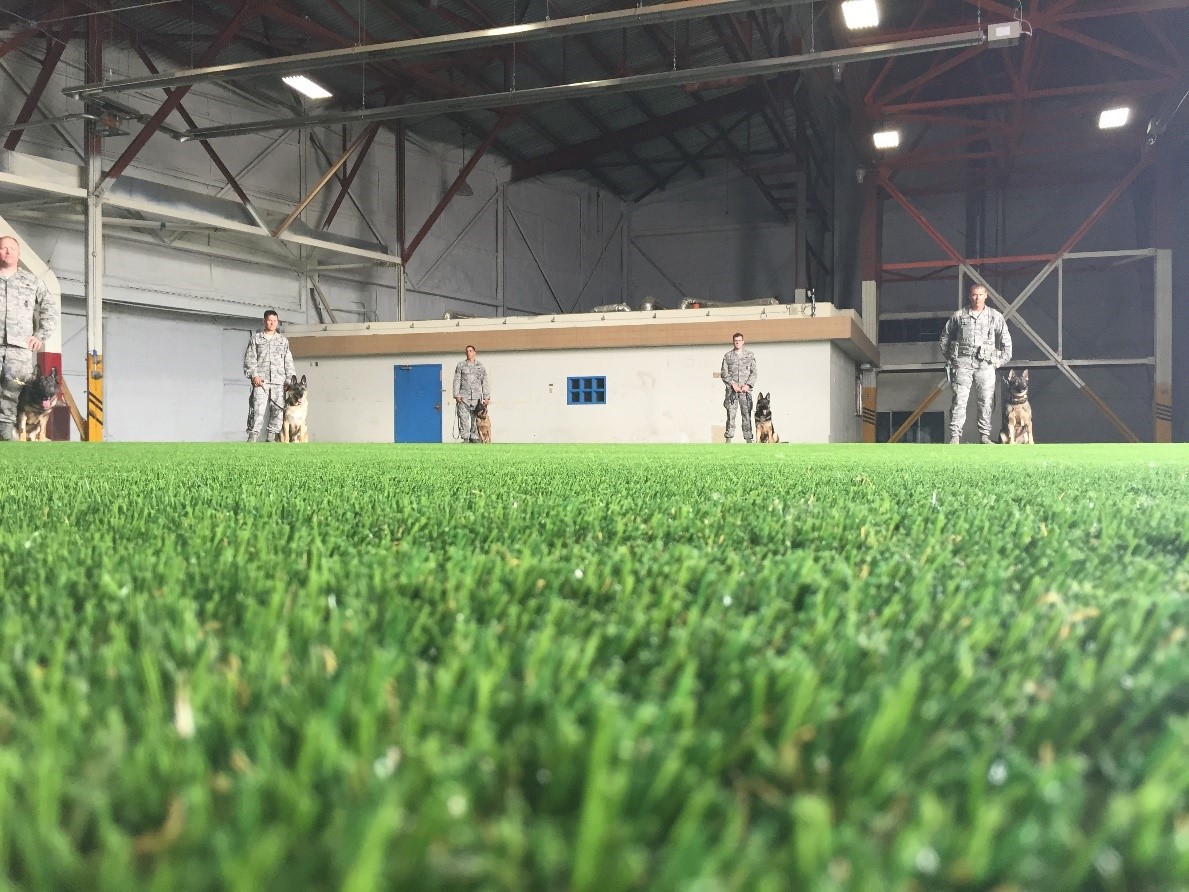Partnership Brings Soy to the Mattress Industry
May, 2009
Soy foam has gained in popularity in the furniture industry and is moving from the living room to the bedroom. Several companies, including Hickory Springs and Sealy Posturepedic, are using soy foam as a component to mattresses.
 The soybean checkoff helped fund the initial research at Pittsburg State University’s Kansas Polymer Research Center (KPRC). “The soybean checkoff works with industry partners to leverage checkoff dollars and increase demand for soybeans by using soy in more industrial products,” says Marty Ross, vice chair of the United Soybean Board’s New Uses committee and a soybean farmer from Delmar, Del. “Soy-based foam provides good performance for mattress companies, and it provides one more market for U.S. soybeans.” Hickory Springs uses soy-based polyols to make the foam in the mattresses in their Preserve soy-based foam line. The Preserve foam can be used in finished mattresses, futon mattresses and a variety of other products.
The soybean checkoff helped fund the initial research at Pittsburg State University’s Kansas Polymer Research Center (KPRC). “The soybean checkoff works with industry partners to leverage checkoff dollars and increase demand for soybeans by using soy in more industrial products,” says Marty Ross, vice chair of the United Soybean Board’s New Uses committee and a soybean farmer from Delmar, Del. “Soy-based foam provides good performance for mattress companies, and it provides one more market for U.S. soybeans.” Hickory Springs uses soy-based polyols to make the foam in the mattresses in their Preserve soy-based foam line. The Preserve foam can be used in finished mattresses, futon mattresses and a variety of other products.
The company’s collaboration with Cargill to develop a molecule to use in the foam led them to replace petrochemical products with soy polyol. The process for manufacturing soy foam includes substituting soy polyols for a portion of petrochemical polyols. This process uses only the oil portion of a soybean, leaving the soybean meal for animal consumption.
“When we started this work, petrochemical prices were high, we had supply concerns for petrochemical materials and were also looking for opportunities to reduce our environmental footprint,” says Brad McNeely, sales manager for Hickory Springs.
Hickory Springs has seen advantages in durability, better feel , color retention and improvements in flammability tests with the soy-based foams. Customers have also reported that the new soy-based foams are more comfortable, says McNeely.
“The soy-based foam is every bit as good and in some cases better than the petrochemical products,” says McNeely. “Our goal, along with Cargill, was to make a soy polyol that matches the performance of petrochemical products, and we have been successful. Soy-based foams are also cost-competitive with petrochemical products.” The success Hickory Springs has had with the Preserve product line may just be the beginning, as the company continues to look at soy-based products for future product lines.
“Our new Preserve G2 foam replaces up to 50 percent more of petrochemical materials with soy-based polyols than our first generation Preserve,” says McNeely. “Our objective is to replace all the petrochemical-based materials with soy-based polyols in the next few years.”
To learn more about Preserve foams, visit www.preservefoam.com.



